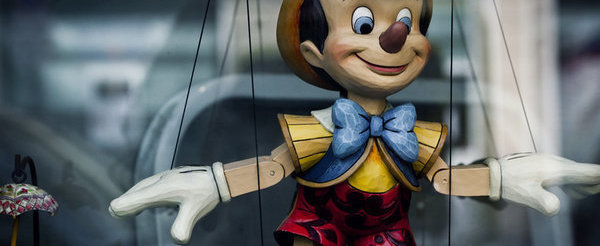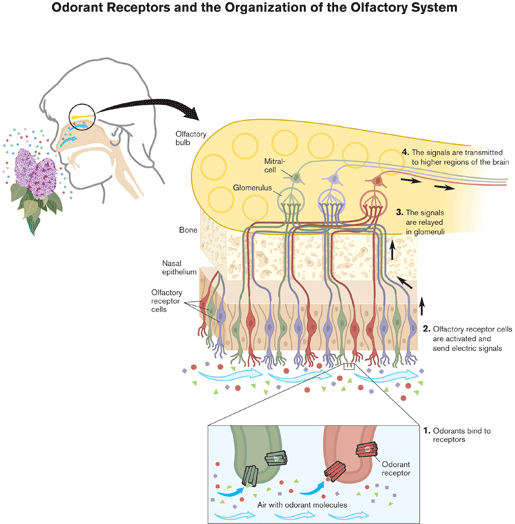How music, smells and images affect customers. (basic postulates)
We all perfectly understand that a bright red button is more likely to attract attention than an inconspicuous button, but why press a button if you do not need what is sold on the site, even if it is the redest and most noticeable button on the entire Internet.
In this article, we will try to begin to cover the topic of “quiet” impact on the buyer, and begin, as expected, with information that can be called basic. How do retail offline stores affect their customers, and what games do they play with your feelings?

How often do you pay attention to what the store smells, except when it was a pungent and unpleasant smell? In “above average” stores, a “smell policy” is usually developed and systematically implemented.
How it works?
Nearly 10 years ago, in 2004, Richard Axel and Linda Buck received the Nobel Prize in physiology or medicine for studying the mechanisms of human olfaction. One of the conclusions was the thesis that, instead of analyzing the information that we receive when we smell, we experience an emotional outburst of varying strength. That is, we have a certain feeling (sensation), which is subconsciously associated with a particular flavor.

This conclusion is the scientific rationale for what happens to a customer in a store that uses odors to increase sales. Obviously, the smell, which is clearly associated with femininity, is becoming a powerful incentive for a customer in a women's clothing or underwear store. While the visual image of the product becomes our obvious “stimulus”, consciousness associates it with information received from another, less obvious stimulus, i.e. smell.
Another study , conducted two years later, showed that using the “right” scent, such as vanilla for women, can double consumption, which in our opinion is phenomenal.
The fact that today there are entire consulting agencies that help store owners literally drive shoppers by the nose, creating the right atmosphere in the trading floors, speaks in favor of the strength of the smell. One
such agency is ScentAir .
Despite the fact that “beauty is a relative concept”, back in 1991 it was found that children, even in infancy, are more interested in photographs of people whom the majority consider to be “pretty”. Most likely, this suggests that beauty is a biological concept, and is due to the mechanisms of human consciousness.

Robert Cialdini explains it this way: “We subconsciously endow beautiful people with positive traits such as talent, kindness, a sharp mind and others.” At the same time, we associate the advertised product with these people and get a clear associative series, the essence of which is that “good, pleasant, smart people use this product, I am the same (I want to be the same), so I must follow their example” . The abundance of advertising information with vivid images to some extent overloaded this channel, but it continues to be an effective influence factor.
The second factor that supposedly affects the customer is the presence of “ mirror neurons ” in our brain.”, Which“ are excited both when performing a certain action, and when observing the execution of this action by another creature. ” In other words, a person experiences similar, possibly identical, emotions, both directly participating in the process and observing it.
Studies of the effect of porn on the human brain have shown that even when looking at photographs of naked people, our neurons work just like they do when we directly engage in sexual intercourse.
Many studies over and over again prove the effectiveness of music as a tool of psychological influence. Maybe you should think about what you hear in stores?
Music can affect our emotions, accelerating or slowing down biological processes. In addition, music is a powerful associative tool that allows you to create a clear image that tells you which product to choose.
The study was a huge discovery for us.the impact of background music on consumers, conducted in 2011. For some period, only music that was clearly associated with France played in one of the wine shops, then only German music played. At the same time, in each period, sales of wines produced in the country, the music of which sounded during the making of the selection, increased. In addition, classical music contributed to the purchase of more expensive elite wines.
Of great importance is the volume of music. The volume on the verge of “very loud” leads to sensory overload, which significantly reduces the ability to self-control, making the decision to purchase less conscious. Loud music leads to hyperstimulation of the brain, which leads to hyperactive behavior of the buyer. The buyer feels high spirits and increased activity without realizing that it was their cause. At the same time, the brain palms the visual image of goods as the most obvious irritant.
A side effect of loud music in youth stores is the discomfort that occurs among representatives of the older generation, which forces them to seek a balance between the desire to leave an uncomfortable place and parental feelings. In such a situation, parents become supple and willingly agree to buy the things that their child has chosen.
In this article, we will try to begin to cover the topic of “quiet” impact on the buyer, and begin, as expected, with information that can be called basic. How do retail offline stores affect their customers, and what games do they play with your feelings?

What does it all smell like?
How often do you pay attention to what the store smells, except when it was a pungent and unpleasant smell? In “above average” stores, a “smell policy” is usually developed and systematically implemented.
How it works?
Nearly 10 years ago, in 2004, Richard Axel and Linda Buck received the Nobel Prize in physiology or medicine for studying the mechanisms of human olfaction. One of the conclusions was the thesis that, instead of analyzing the information that we receive when we smell, we experience an emotional outburst of varying strength. That is, we have a certain feeling (sensation), which is subconsciously associated with a particular flavor.

This conclusion is the scientific rationale for what happens to a customer in a store that uses odors to increase sales. Obviously, the smell, which is clearly associated with femininity, is becoming a powerful incentive for a customer in a women's clothing or underwear store. While the visual image of the product becomes our obvious “stimulus”, consciousness associates it with information received from another, less obvious stimulus, i.e. smell.
Another study , conducted two years later, showed that using the “right” scent, such as vanilla for women, can double consumption, which in our opinion is phenomenal.
The fact that today there are entire consulting agencies that help store owners literally drive shoppers by the nose, creating the right atmosphere in the trading floors, speaks in favor of the strength of the smell. One
such agency is ScentAir .
Cover girl
Despite the fact that “beauty is a relative concept”, back in 1991 it was found that children, even in infancy, are more interested in photographs of people whom the majority consider to be “pretty”. Most likely, this suggests that beauty is a biological concept, and is due to the mechanisms of human consciousness.

Robert Cialdini explains it this way: “We subconsciously endow beautiful people with positive traits such as talent, kindness, a sharp mind and others.” At the same time, we associate the advertised product with these people and get a clear associative series, the essence of which is that “good, pleasant, smart people use this product, I am the same (I want to be the same), so I must follow their example” . The abundance of advertising information with vivid images to some extent overloaded this channel, but it continues to be an effective influence factor.
The second factor that supposedly affects the customer is the presence of “ mirror neurons ” in our brain.”, Which“ are excited both when performing a certain action, and when observing the execution of this action by another creature. ” In other words, a person experiences similar, possibly identical, emotions, both directly participating in the process and observing it.
Studies of the effect of porn on the human brain have shown that even when looking at photographs of naked people, our neurons work just like they do when we directly engage in sexual intercourse.
Prick up your ears
Many studies over and over again prove the effectiveness of music as a tool of psychological influence. Maybe you should think about what you hear in stores?
Music can affect our emotions, accelerating or slowing down biological processes. In addition, music is a powerful associative tool that allows you to create a clear image that tells you which product to choose.
The study was a huge discovery for us.the impact of background music on consumers, conducted in 2011. For some period, only music that was clearly associated with France played in one of the wine shops, then only German music played. At the same time, in each period, sales of wines produced in the country, the music of which sounded during the making of the selection, increased. In addition, classical music contributed to the purchase of more expensive elite wines.
Of great importance is the volume of music. The volume on the verge of “very loud” leads to sensory overload, which significantly reduces the ability to self-control, making the decision to purchase less conscious. Loud music leads to hyperstimulation of the brain, which leads to hyperactive behavior of the buyer. The buyer feels high spirits and increased activity without realizing that it was their cause. At the same time, the brain palms the visual image of goods as the most obvious irritant.
A side effect of loud music in youth stores is the discomfort that occurs among representatives of the older generation, which forces them to seek a balance between the desire to leave an uncomfortable place and parental feelings. In such a situation, parents become supple and willingly agree to buy the things that their child has chosen.
